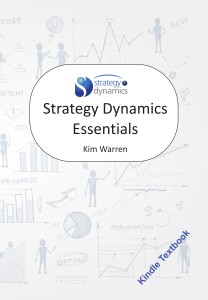Kim Warren on Strategy
Strategy insights and living business models
Preparing for one-off shocks
Following my Weather hits utilities post, I just reviewed the EU-funded CRISADMIN project assessing one-off impacts on city infrastructure. This goes beyond a single utility to look at inter-sector effects, including the consequences of citizens’ behavioural responses … a flood or bomb takes out some metro lines, so people flood the cell-phone network and take to the roads, for example.
This is a really neat example of just how valuable simple, aggregated models can be. Most other such efforts model things at an entity-level (each metro line, cell-phone mast or power transformer), including the geo-spatial distribution and links between them. That approach is very powerful for assessing every local detail of what could happen following any number of specific events at specific locations, it requires considerable effort and can lose the big picture of broad strategy questions, both about preparedness and city-wide cross-sector response.
Just heard also about a large and intensive response-planning exercise based on a similarly aggregate-level model I developed for a client concerning possible earthquake impacts on ports in the Puget Sound area around Seattle – one of the largest import/export hubs in the USA which unfortunately sits near very active tectonic-plate boundaries. See
- http://www.citylab.com/tech/
2014/10/heres-one-way- earthquake-prone-cities-are- thinking-ahead/381715/ - http://www.rockpapershotgun.
com/2014/09/05/how-games-save- us-from-disaster/ - http://www.portstrategy.com/
news101/port-operations/ planning-and-design/us-ports- prepare-for-worst - http://green.tmcnet.com/news/
2014/09/26/8038132.htm
Copyright © 2025 Kim Warren on Strategy. All rights reserved

